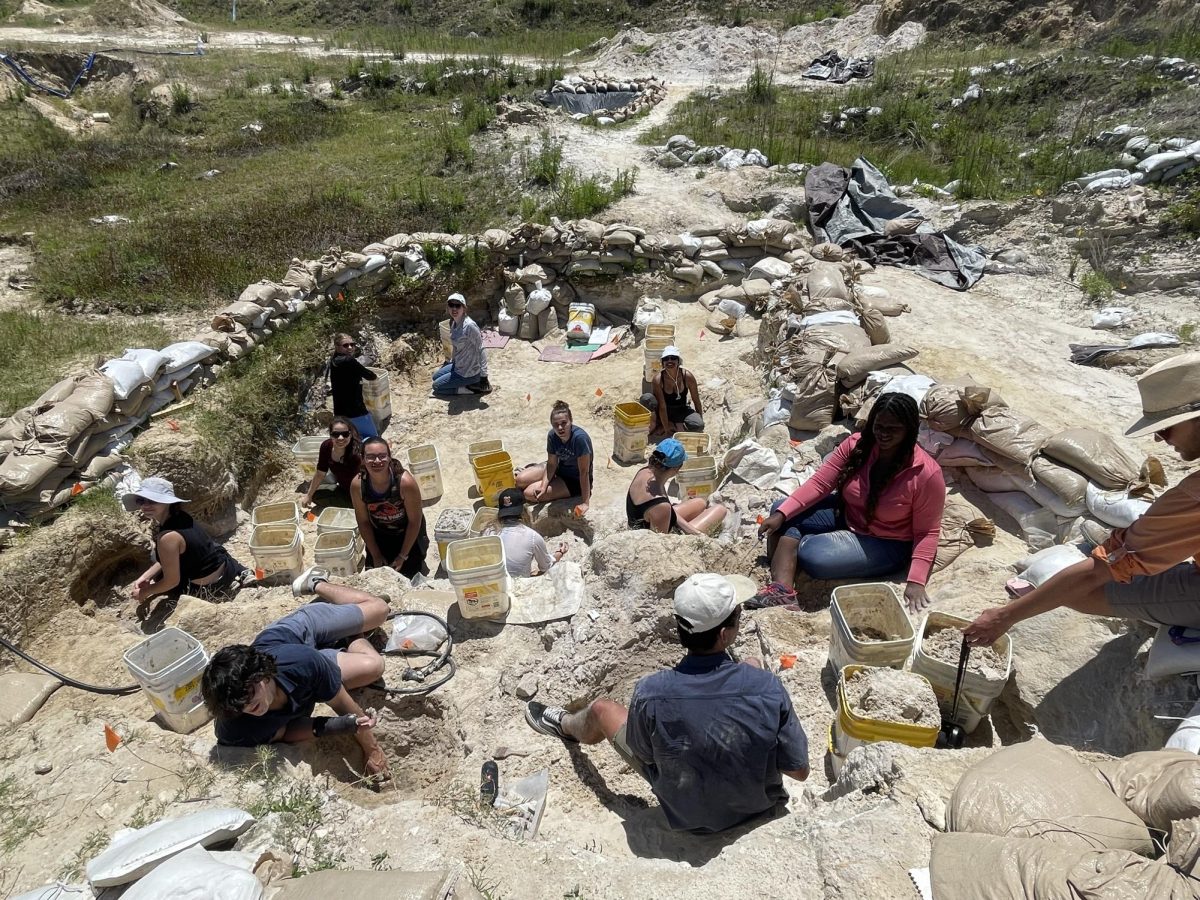CF students were invited to take part in UF Paleontology’s fossil dig at the Montbrook site on April 13 and 14 in Williston, thanks to CF biology professor, Elena Amesbury, who also advises the STEM club. Before diving into the fossil dig, let us explore the history and significance of the Montbrook site.
Montbrook, located south of Gainesville near the town of Williston in Levy County, is estimated to be 5 to 5.5 million years old. The Montbrook site is significant for its rich paleontological findings and holds preservation from the latest Miocene to the early Pliocene. It provides valuable evidence of late Hemphillian fauna in north Florida and into ancient river systems and coastal ecosystems, thereby contributing to our understanding of the region’s biodiversity and evolution.
At the fossil dig, participants were given some buckets for debris and a bag for fossil collection. There were designated areas for digging and easy access to all necessary tools. One participant found what looked like an enormous tortoise shell fossil. As a group, participants wrapped the tortoise shell in plaster sheets, preparing the fossil for transportation. Shortly after, another participant found what looked like ribs and other interesting artifacts within the grounds. The Montbrook site boasts a wide variety of fossils, ranging from aquatic to terrestrial species.
After fossil collection, bone bags from the field are eventually returned to the Florida Museum Research and Collections building, which is connected to the Florida Museum of Natural History in Gainesville, or they may be temporarily stored offsite. Volunteers primarily handle the processing, starting with a screening process to separate fossils from sand and clay. Once cleaned and dried, the fossils are sorted and cataloged, which involves systematically recording information about the fossil specimens, including their location, geological context, taxonomy and physical characteristics. Also, the specimens are sometimes glued back together by volunteers, including a retired zookeeper. Finally, the fossils are painted with archival paint, catalogued and organized taxonomically so that fish are first, followed by turtles, alligators, birds and then into mammals. Each species is organized by skeletal element within a cabinet or tray.
UF Paleontology’s fossil dig at the Montbrook site is a hands-on experience for CF students. The site’s rich findings, from aquatic to terrestrial species, contribute to our understanding of Florida’s ancient ecosystems, while meticulous post-collection processes ensure careful preservation and study of these fossils. Engaging in fossil digging at any site is strongly encouraged, as it offers the opportunity to unearth unexpected discoveries and contribute to the paleontological community.




